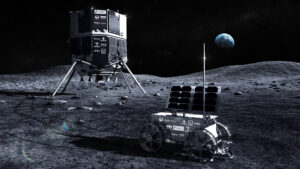
Amazon is on the brink of a transformative shift as the number of robots in its warehouses is poised to outnumber human employees. With over one million machines already operational across its facilities, this development marks a significant milestone in the company’s automation journey, according to a recent report.
These robots are revolutionizing the way Amazon handles its logistics, taking on tasks that range from heavy lifting and item retrieval from towering shelves to assisting in sorting and packaging orders. According to the Wall Street Journal, three-quarters of Amazon’s global deliveries now involve some form of robotic assistance.
The Rise of Robotics in Amazon’s Warehouses
The integration of robotics into Amazon’s operations is not just about replacing human labor but enhancing productivity. Rueben Scriven, a research manager at Interact Analysis, noted,
“They’re one step closer to that realization of the full integration of robotics.”
Amazon asserts that these machines have enabled the company to allocate human workers to more skilled tasks, reducing repetitive labor.
At a sprawling 3-million-square-foot facility in Shreveport, Louisiana, over six dozen robotic arms are employed to sort and stack millions of items. These advanced robots work in concert with human employees, preparing carts for loading onto trucks and packaging orders, resulting in a 25% increase in processing speed compared to other warehouses.
Impact on Workforce and Job Evolution
Despite the surge in automation, Amazon continues to hire extensively, creating new job categories such as flow control specialists and reliability maintenance engineers. An Amazon spokesperson highlighted,
“Since introducing robots, we’ve continued to hire hundreds of thousands of employees and created many new job categories worldwide.”
However, the average number of employees per facility has decreased to about 670, the lowest in 16 years, as reported by the Wall Street Journal. The productivity per employee has skyrocketed, with the number of packages shipped per worker increasing from 175 a decade ago to 3,870 today.
Future of Employment in the Age of AI
Amazon’s CEO, Andy Jassy, has acknowledged that the corporate workforce is expected to shrink as artificial intelligence renders certain roles obsolete. In a conversation with CNBC’s Jim Cramer, Jassy stated,
“Like with every technical transformation, there will be fewer people doing some of the jobs that the technology actually starts to automate. But there’s going to be other jobs.”
Currently, Amazon employs approximately 1.56 million people, predominantly in warehouse roles, making it the second-largest private employer in the United States. The company has trained over 700,000 workers globally for higher-paying positions, many involving robotics.
Technological Advancements and New Opportunities
Amazon’s foray into robotics began in 2012 with the acquisition of Kiva Systems for $775 million, a pivotal move that set the stage for its current automation strategy. The company is now testing humanoid robots designed for warehouse tasks, signaling a new chapter in its technological evolution.
Yesh Dattatreya, a senior applied scientist at Amazon Robotics, is spearheading efforts to integrate artificial intelligence into Amazon’s robotic systems. The goal is to develop machines capable of responding to verbal commands, further blurring the lines between human and machine capabilities.
As Amazon continues to innovate, the implications for the workforce and the logistics industry are profound. The company’s journey reflects broader trends in automation and AI, offering a glimpse into the future of work where humans and robots increasingly collaborate.







